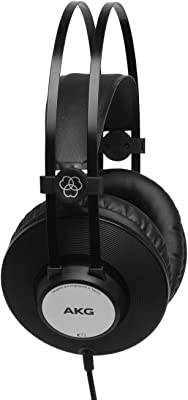When it comes to professional audio work, you need a good set of headphones. Transcription work is no different.
A good pair of headphones will allow you to do the most accurate transcription work possible. It will let you transcribe dialog without missing a word.
Top 3 - Headphones for Transcription
Preview | Product | Price |
|---|---|---|
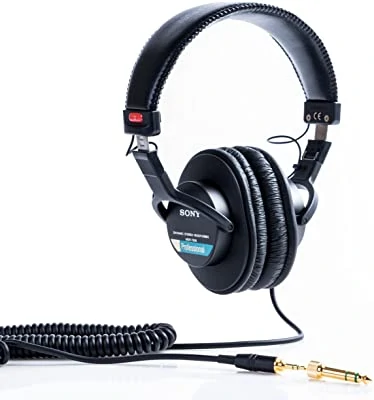 | ||
 | ||
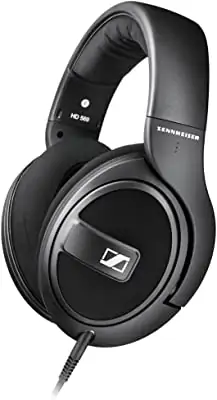 |
Here are my picks for some of the best transcription headphones offering perfect vocal clarity.
Best Transcription Headphones for the Money
1. Sony MDR7506
Having been around for three decades, the Sony MDR7506 is one of the longest selling pair of headphones. With a reputation like that, these should be some really good headphones.
And these are really great headphones. Both in terms of design and sound.
The design hasn’t changed much and the headphones still look like they are from the late ‘80s, early ‘90s. Even the packaging is still very old school.
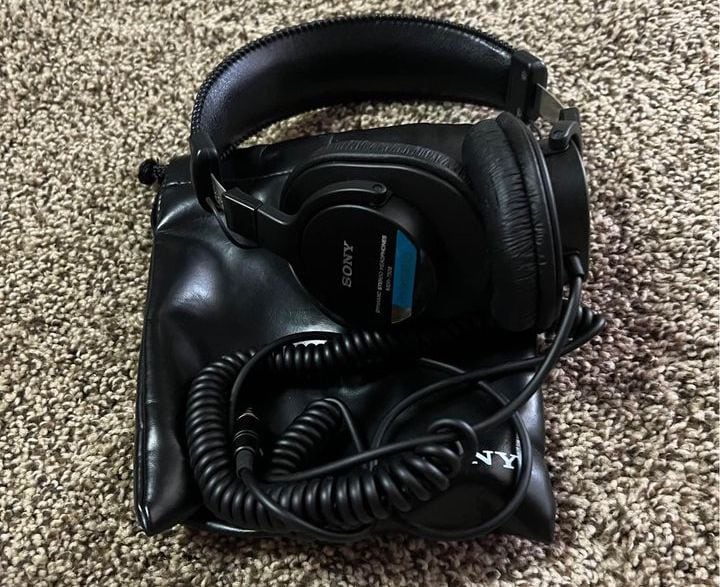
Of course, the real draw is the sound. Which is fantastic.
The MDR7506 doesn’t have the flattest frequency response. There is a slight roll off in the high lows, with quite a boost in the high mids and low highs.
But this is ideal for transcription work. Dialog is crystal clear. You can clearly hear what every character is saying. Even quieter parts like whispering are still clearly audible.
The neodymium magnet design plays a significant role in achieving smooth and clear sound. These types of drivers also contribute to maintaining consistent volume levels, especially in the presence of potential noise spikes.
I find it particularly annoying when transcribing something and encountering a sudden transient spike caused by the person getting too close to the microphone or dropping the recorder. Having high-quality magnets and drivers helps in smoothing out even these unexpected volume spikes.
The MDR7506 is also comfortable to wear. The padding makes it sit comfortably on your head, while the cans are big enough to fit over most ears.
The earcup lining itself is also very durable and sturdy. I've had these headphones for over seven years, and there's no tear or wear on the lining of the earcup. That's pretty impressive.
I wear glasses, however, which did present a small issue. The headphones tend to push on the frames of glasses, making them dig into the sides of your head a bit. I couldn’t sit with the headphones on for too long before it became uncomfortable.
2. Audio-Technica ATH-M20x
The Audio-Technica ATH-M20x is the budget version of their highly popular ATH-M50x. But it is a budget version that deserves to be just as popular.
The M20x isn’t too different from its big brother. But there are noticeable differences.
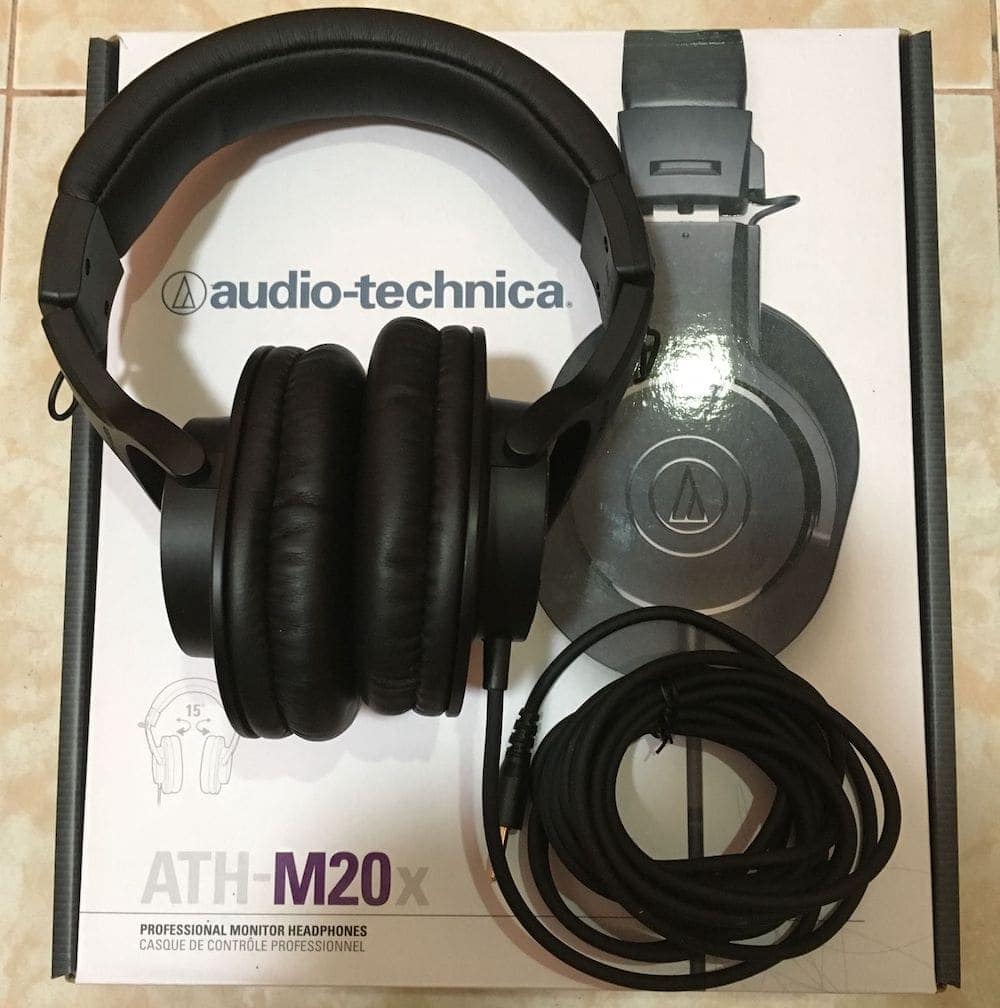
The first thing I noticed was the plastic and the lack of a joint on the cups. That means that it isn’t quite as durable, and there is no folding the headphones for easy storage. Luckily, the plastic doesn’t feel cheap.
The second, and most important, difference is the sound. Of course, I wasn’t expecting the M20x to sound like an M50x.
But the difference isn’t that big that I would call it a downgrade. Yes, it isn’t as good, but it is still more than good enough.
While the bass is a bit lacking, the mids and highs are still great. Dialog has a lot of clarity, making transcription work a breeze.
The M20x also has fairly good isolation. So, you don’t have to worry too much about outside noise interfering with your work.
Comfort is a bit of an issue. While I thought the M20x was comfortable at first, after about two hours I had to take a break. These aren’t headphones for long work sessions.
3. Sennheiser HD 569
Sennheiser’s HD series of headphones are among the best on the market. The HD 569 is one of the best in the series while still being affordable.
The HD 569 has the same sleek look associated with the HD series. It looks modern without being too crazy.

This is also an extremely comfortable pair of headphones. I can easily wear it for hours without feeling like I need to take a break.
There is a nice bass response, but it is never overpowering. The mids are nice and rich. Since this is where most dialog sits, voices are crisp and clear.
There is also a nice brilliance in the top end. This gives the overall sound a bit more presence, but I do suspect some people might find it to be a bit sharp.
Playback is quite dynamic. This makes it easy to distinguish between different characters while transcribing.
A nice bonus is that the HD 569 comes with two detachable cables. You get a 3m and a 1.2m cable. This is great if you don’t need a long cable and don’t want to deal with extra cable hanging around or lying all over your desk.
4. ECS Wordmaster Transcription Headphones
The ECS Wordmaster is designed specifically for transcription work. It is actually a popular option among medical transcriptionists.
When using the Wordmaster, I could immediately see why it is such a popular set. Everything about it makes transcription work a breeze.
The Wordmaster doesn’t look like much compared to other headphones. But that is fine because comfort is what is important here.
The headphone sits comfortably on top of your head. The ear cups are also nice and large to fit easily over your ears.
The padding is also soft enough so that you can wear the headphones for long periods. I did notice that the headphones tend to slip a little and need to be adjusted every now and then. This isn’t a big deal for me since I have a habit of adjusting my headphones, but it might be annoying for some.
As for sound, there isn’t anything special going on here. These headphones are purely for hearing voices clearly. And voices are crystal clear.
Noise isolation is quite exceptional. These headphones manage to block out most outside noise. Even loud noise is blocked out quite well. NO wonder these headphones are popular among medical transcriptionists.
5. AKG Pro Audio K72
AKG is known for their high quality headphones. The K72 is that familiar AKG quality, but at an extremely affordable price.
The K72 has a very simple design. This isn’t a pair of headphones that are going to draw attention.
The headphones sit quite comfortably. The ear cups are nice and large with thick padding that sits well around the ears.
I don’t like the headband. It feels very flimsy and like it could snap at any moment. The pad is at least comfortable enough and adjusts easily.

The sound is at least much better. There is some great crispness and a lot of clarity. The mids do have a bit cloudiness, but it isn’t enough to really impact the clarity of voices. As long as you have enough volume, the mids won’t impact any transcription work.
I have to say, I've always found AKG products to be extremely bright with a lot of high frequency response. When using the K72 headphones for recording and mixing, the highs always seemed like they needed to be tamed.
However, I must say that for transcription, it's a major plus to have that crisp high end. It really makes the words much more intelligible.
Isolation isn’t perfect though. The K72 does let in quite a bit of outside noise compared to other closed back headphones. You will certainly want to work somewhere quieter to make sure you are doing the best transcription work possible.
Overall, despite a few small issues, the K72 is still a great pair of headphones. It is a great transcription headphone for a very affordable price.
6. Tascam TH-02
The Tascam TH-02 is a great option if you are working on a very tight budget. These headphones aren’t going to impress, but they are going to get the job done.
I was certainly concerned about the quality of the TH-02 before testing it. Fortunately, it did surprise me quite a bit.
This is a very basic design for headphones. The all plastic build does feel cheap, but doesn’t feel too flimsy.
The padding on both the head band and the ear cups is nice and thick. The padding on the ear cups does become a bit warm after a while, but I never felt uncomfortable while wearing the headphones.
As for the sound, these are absolutely not great headphones for music production. But for transcription, the faults in the sound actually does help it a bit.
There is quite a bit of exaggeration in the mids. Since this is where voices mainly sit, that exaggeration actually makes dialog stand out a bit more.
The sound is quite muffled on lower volumes, while higher volumes distort quite a bit. You will have to sit with the volume until you find the sweet spot.
Things to Consider When Choosing Transcription Headphones
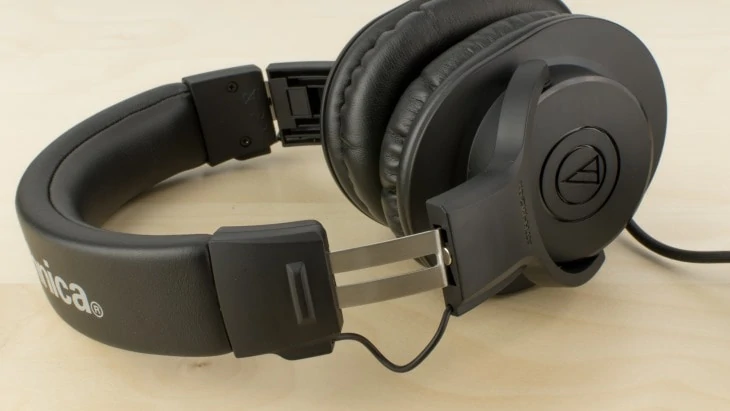
Transcription work needs to be done accurately. I believe it's also important to be able to focus and have a pair of headphones that doesn't cause ear fatigue.
Whenever I've done transcriptions, I try to get as much done while “in the zone”. It not only keeps me motivated, but it also helps me reach my deadline faster and with better results.
To ensure you are as accurate as possible, you need to consider a few things when picking out a pair of transcription headphones.
Frequency Response
As with any headphones for professional work, the accuracy and quality of the sound is going to be the most important aspect. This means that you should take careful consideration to the frequency response of your headphones.
A flat frequency response is going to be important no matter the type of work. This is going to give you the most natural, accurate sound.
For transcription work, having a slight boost in the mids and highs will be beneficial, however. This will help make voices stand out a bit more.
The human voice sits between 250Hz and 4000Hz. Having a boost in this range will make voices cut through background noise better.
A boost in the highs will also help. This will give voices some extra clarity to make them sound crisper.
You can also get headphones that are a bit less bass heavy. Low end can make voices a bit muffled, making them less clear and audible.
Driver Quality
Another thing that makes better headphones for transcription stand out from other headphones is the type of driver and magnets used. In my opinion, neodymium magnets offer the smoothest performance you can find. So, when you're researching these headphones, I recommend getting a pair that uses those magnets.
The reason this makes a difference is because all types of speakers, including headphones, naturally compress sound.
And since these headphones are mainly designed for production, recording, and sometimes even mixing, the transducers and magnets are built to handle high levels of harmonic content.
When you're listening to voice, dictation, or similar content, many lower-quality magnets tend to perform too strongly, resulting in harsh compression of the voice.
Additionally, if you're playing a recording with a lot of background noise, like in a courtroom or with reverb reflections, subpar magnets and transducers will amplify that noise unnecessarily.
Comfort
Since you are going to be sitting for long periods, you want headphones that sit comfortably on your head and around your ears.
Thick padding and big ear cups are the most ideal. Be careful of plastic and vinyl padding. These tend to become hot and sweaty quite easily. Velour and other soft fabrics are the best options.
Another important consideration is whether your headphones have removable and interchangeable ear cups. This feature is useful for future-proofing your purchase.
Over time, sweat can cause the ear cups to deteriorate, even with high-quality materials. The foam may lose its shape.
It would be unfortunate to have to buy a new pair of premium headphones that you love just because you want to replace the ear cup.
Also make sure that the head band is adjustable. This will allow you to make sure the headphones sit sit and secure on your head. You don’t want the headphones to be too tight that it squeezes your head, and not too loose that it keeps slipping.
Another part to consider is the weight of the headphones. Lighter headphones will, of course, be more comfortable to wear for longer. Just be careful, as lighter can also mean a less durable set of headphones and a lower quality driver.
Build Quality
When it comes to headphones, it's important to prioritize good exterior casing and build quality. Not only does this future-proof your purchase, but it also ensures reliability, especially if you frequently travel and use your headphones in various locations such as coffee shops and restaurants.
We've all experienced the hassle of packing and unpacking headphones in our already full backpacks. This constant handling can take a toll on them.
Therefore, I recommend finding a pair of headphones with sturdy wire support. European brands like AKG and Sennheiser are known for their excellent framework.
While many people believe that the cups need the most protection since they house the drivers, it's actually the main cable and the construction of the headband itself that determine the longevity and functionality of the headphones.
Brand
In general, I have observed that well-known brands, especially those that specialize in professional gear for studios, are the recommended choice.
The main reason behind this is that top brands like AKG, Sony, and Sennheiser have the necessary infrastructure to acquire high-quality components, offer superior design, and maintain competitive pricing without compromising on build quality.
I believe that this is one of the factors contributing to the enduring popularity and widespread recognition of their brands within professional circles.
I understand that this may sound silly, but there may come a time when you want to sell your headphones on platforms like Ebay or Reverb. You can then use the funds generated from the sale to purchase new headphones or something else.
Well-known brands tend to hold their value better, even if they have been heavily used. This is because trust in the brand name plays a significant role in their resale value.
Open vs Closed Back
There are two types of headphones: closed back and open back. Open back headphones have the back of the driver exposed, while closed backs have a cover.
Open back headphones have a more natural sound since they allow air to move freely out of the headphones. Their frequency range is also much wider giving you a richer and fuller sound.
The disadvantage is that they don’t block out outside noise. This doesn’t make them very ideal for doing transcription work in areas where you are surrounded by a lot of noise or that isn’t very quiet.
Closed back headphones are pretty much the opposite. They don’t allow air to move as freely. This means that their sound is a bit tighter and not as full and rich.
This does, however, also mean that they are pretty good at blocking out noise. If you don’t work in a quite studio, or your transcription work is done in a court room or somewhere noisy, these are ideal.
While both open and closed back headphones work for transcription, closed backs tend to be the better option. You aren’t losing too much in terms of accuracy, but gain a lot in terms of noise isolation.
Additionally, noise isolation works both ways. With closed-back headphones, not only can you block out noisy environments, but you can also ensure that you're not annoying people sitting close to you in public places.
Privacy is an important consideration. Some of us may be transcribing highly sensitive information from courtrooms or even government dictations.
You certainly don't want sound to leak from your headphones and be easily heard on a plane, for instance, where the people next to you could potentially overhear the confidential and private information you're transcribing.
Take Breaks
This doesn’t have anything to do with the headphones really, but is simply good practice. Our ears aren’t meant to be exposed to noise constantly, especially not up close like with headphones.
Make sure to take frequent breaks. I usually take a 5 minute break for every hour of work. This gives your ears a chance to relax as well as cool down if you are wearing headphones that tend to get warm.
The quality of the headphones does make a bit of a difference. Headphones with higher sound quality can help to prevent your ears from getting tired quickly. Lower quality headphones will tire out your ears much faster.
You should also consider the long-term implications of constantly listening to mid-range sounds for an extended period of time. Even if the headphones have excellent quality, you don't want to risk potential harm to your hearing.
There is also a phenomenon I call the “complacency effect” when listening to loud signals for a prolonged period over headphones. The loudness starts to feel normal, and sometimes you may even increase the volume because you think it's too low.
This is one of the hazards of ear fatigue, where you lose perspective on decibel levels when using headphones.
Therefore, taking regular breaks is beneficial for both your hearing and mental health.
Final Word
When it comes to transcription work, the performance of the headphones is crucial. It is important to have crystal clear frequency response, especially in situations with low quality or noisy recordings.
Equally important is choosing a pair of headphones that you can see yourself wearing consistently for years to come. Many people mistakenly believe that the next version of headphones will be better, similar to Apple products.
However, this is not always the case. I still use headphones that I purchased six years ago, and often the updated versions are actually of lower quality.
So, don't solely focus on price and assume that the next version will be better. It doesn't always work that way.
Overall, I believe this list provides the most comprehensive options for the best transcription headphones available. Regardless of personal preferences and comfort, I think many of you will be able to do a great job with any of the products listed.



